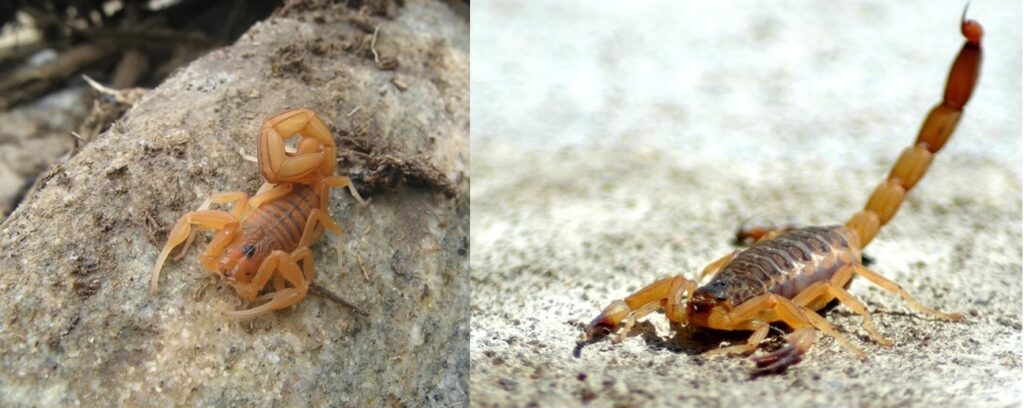Dealing With Scorpions in the Texas Hill Country

The Texas Hill Country, with its rugged landscapes and warm climate, is a prime habitat for various wildlife, including the Striped Bark Scorpion, which is the most common species found in Texas. Understanding where these scorpions come from, their potential dangers, and how to effectively keep them out of your home is essential for living comfortably and safely in this region.
Origins and Habitat
The Striped Bark Scorpion is native to the midwestern and southern United States, thriving in areas like the Texas Hill Country. They prefer dry, rocky areas with loose soil where they can easily hide under rocks, logs, and other debris during the day. At night, these scorpions become more active, venturing out to hunt for their prey, primarily insects and small arthropods.
Are Striped Bark Scorpions Dangerous?
While the Striped Bark Scorpion is venomous, its sting is generally not considered life-threatening to humans, with exceptions for allergic reactions or particularly vulnerable individuals such as small children, the elderly, or those with compromised immune systems. The sting of a Striped Bark Scorpion can cause significant pain, swelling, and localized warmth, and in rare cases, more severe symptoms like numbness, frothing at the mouth, and difficulties in breathing due to allergic reactions.
It is important to note that while the sting is usually not fatal, it is certainly unpleasant and can be quite distressful. Therefore, caution should be exercised when in areas known to harbor scorpions.
Preventing Encounters and Infestations
Living in scorpion territory necessitates taking proactive measures to minimize encounters and prevent them from entering your home:
- Seal Entry Points: Ensure that cracks, crevices, and other small openings in the foundation, walls, and around windows and doors are properly sealed. Use weather stripping and door sweeps to close gaps under exterior doors.
- Remove Harborage Sites: Keep your yard clean and free of debris, piles of wood, rocks, and dense ground covers where scorpions may hide. Regularly trim bushes and trees that could serve as pathways into your home.
- Control Insect Populations: Since scorpions feed on insects, reducing the insect population around your home can lessen the likelihood of scorpions venturing indoors. Ensure that garbage bins are sealed and outdoor lighting is minimized to avoid attracting insects.
- Use Glue Traps: Place glue traps along the edges of walls inside your home, especially in dark areas such as basements, garages, and utility rooms. These can help capture scorpions that manage to get inside.
- Regular Inspection and Maintenance: Frequently inspect dark and seldom-disturbed areas of your home, like closets, shoes, and under furniture. Shake out bedding, clothing, and shoes before use, especially if stored in garages or basements.
Professional Pest Control
For areas heavily populated with scorpions or if DIY methods prove insufficient, consider hiring Alternative Pest Control. We can offer more comprehensive solutions and ongoing prevention plans to keep your home scorpion-free.
Living with the reality of Striped Bark Scorpions in the Texas Hill Country doesn’t have to be a distressing experience. With the right knowledge and precautions, you can effectively manage their presence and minimize the risks associated with these native arachnids.
